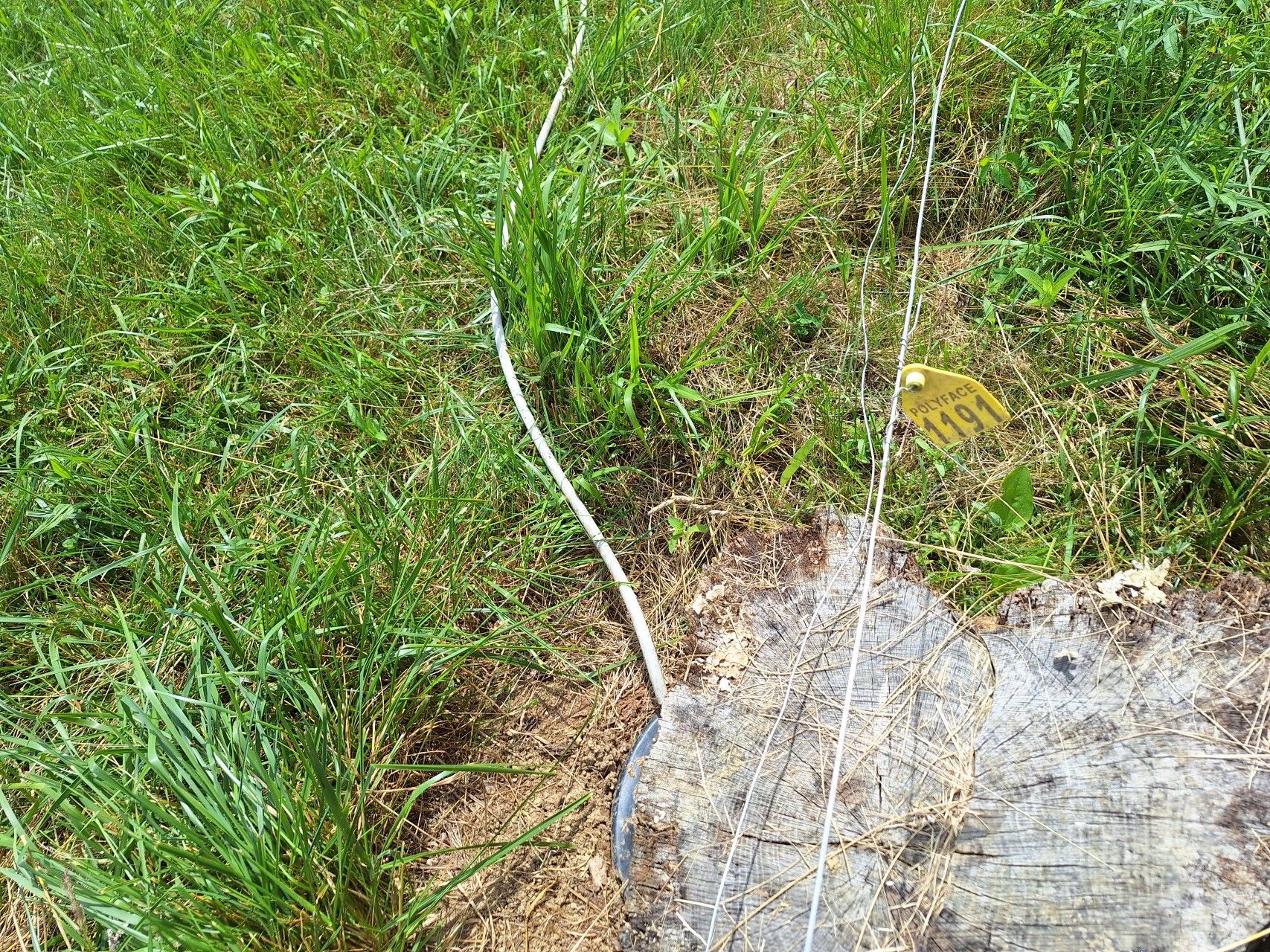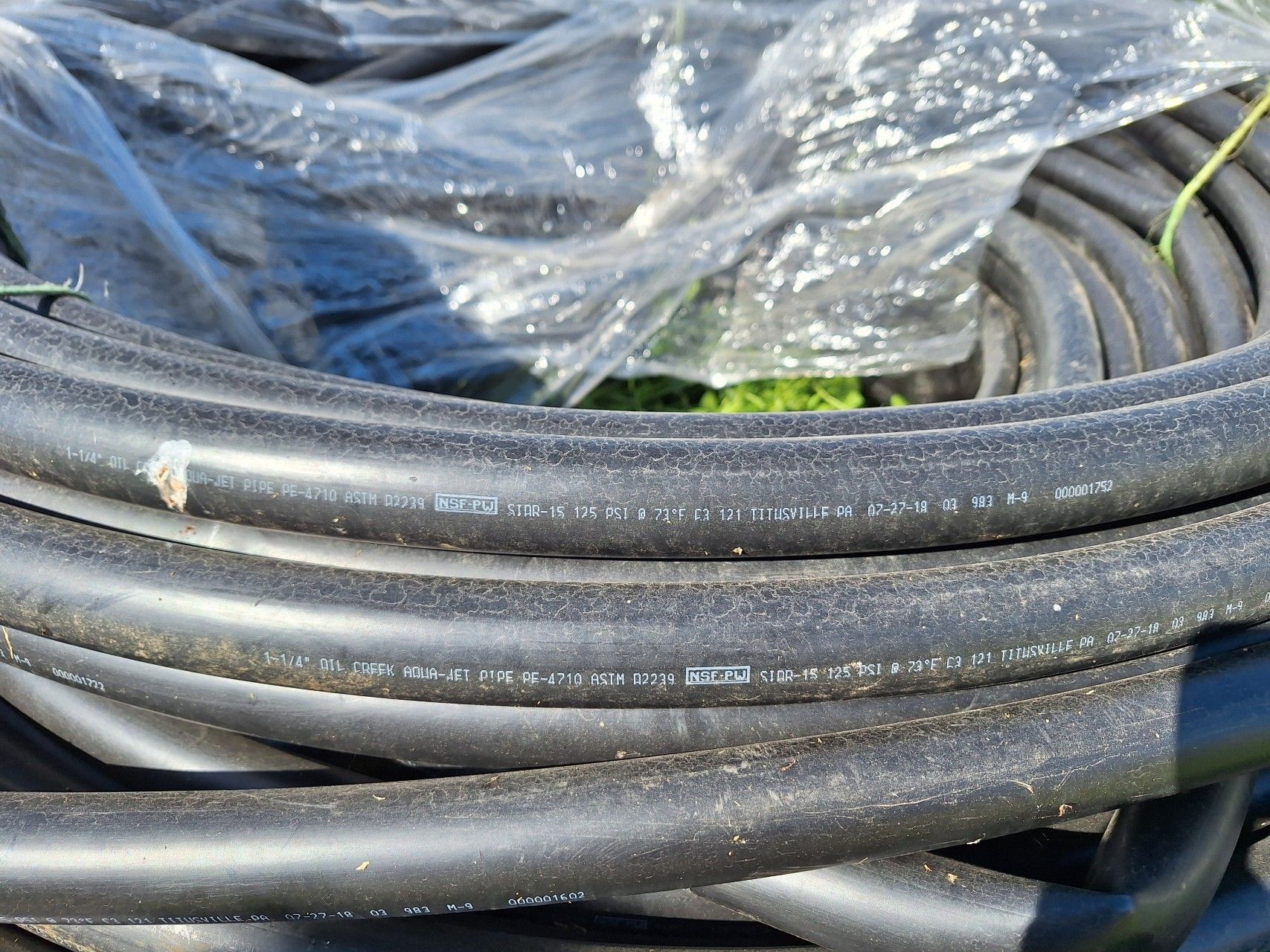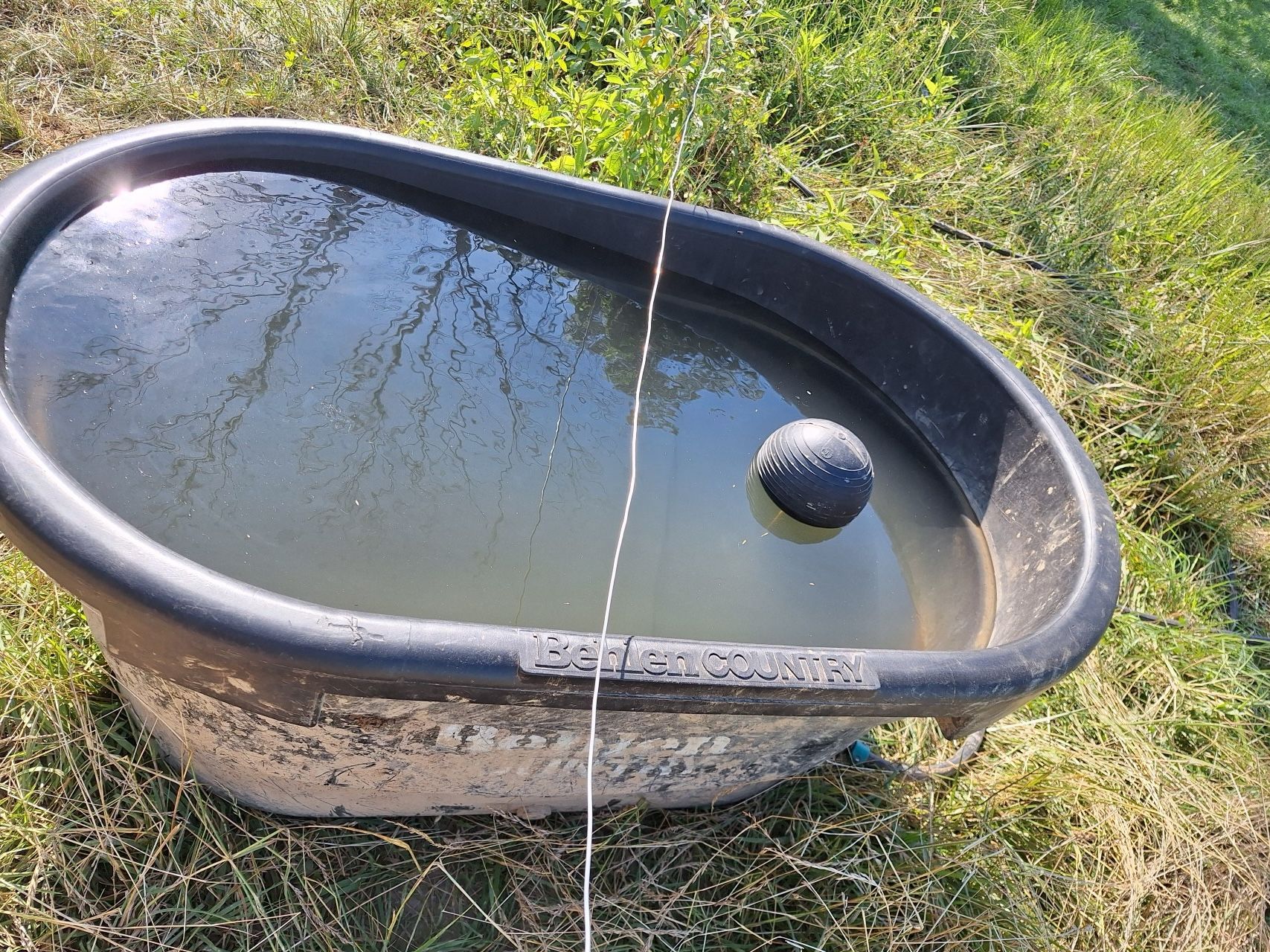Guest post from Firm Foundation Farm
Polyface June 2024 - Water System Observations
During my visit to Polyface farm for the Two Days of Truth Summit in June 2024 my wife and I took some time to walk around the farm and explore. Having made our first visit to Polyface back in 2019 before we had as much first hand farm experience so had a much different perspective and learned about the details of daily operation.
Quick and easy water systems for our grass fed beef herd has been a big area of learning. Some of our early constraints revolved around (expenses and lack of water/ponds onsite). We started carrying 5 gallon buckets of water and quickly started finding ways to improve.
Our current water system consists of:
- IBC totes connected together at the highest point in our pasture area
- Water timer that runs every morning to fill IBC totes to keep reserve up and limit loss in case of leak
- Above ground water lines in ¾” orchard tubing which run to the IBC totes and then down the hill to follow pastures
- Connection points between every other pasture division
- 100 and 150 gallon rubbermaid tanks
- Garden hose to connect tank with a Jobe garden hose adapter
- Jobe float values
With this context we found the following areas of Polyface interesting.
Water connection points

Ideally we have a connection point to every other pasture and it is easy to find…but in high grass and an odd number of pastures sometimes connection points are not as predictable. At Polyface we noticed a pattern of ear tags on fence lines and small log pieces in the pasture. Turns out an ear tag indicates the presence of a water hookup and the log covers an access hole that is lined with corrugated pipe. Hose connections are made by screwing onto a Y adapter with shutoff valves.


Water Tubing
Our water lines sometimes feel halfway finished since we have not buried them. At Polyface we found that some lines are buried, but also there are ones that are not. Additionally, we noticed that lines that are in the pasture are much heavier duty then our ¾” orchard tubing which is susceptible to damage from cow hooves. Polyfacelines we saw were “1-1/4" Black Aqua-Jet Poly Pipe, PE-4710” which is a lot more sturdy.


Water Tubs
I was curious to see if there was a favorite brand of water tub, but it seemed like a mix, some of which included RubberMaid and Behlen Country.
We did see Polyface using our split the pastures trick with the water tubs to allow dumping the tank only every two moves. It’s the little things like these tricks that can save a new grazier from a lot of trial and error.

Also of note was the in-tank-float-valve versus a side tank mounted float. This picture shows one of the reasons why that matters on a mobile tank with hills. A side mounted float on this tank would need to be moved to the left side or the tank rotated, but since they are using a float valve set well below the top of the tank the hill slope is not a concern for the tank to overflow.
The connectors on the tub and Y side were both brass which would be durable. However, I’m on the fence about the ease of use. Perhaps in the long term over years this is more cost effective, but lately I have really liked the plastic Jobe tank connector for its two piece design of speed and less time being sprayed when connecting a hose with water pressure. Time will tell on the durability versus time saved, but I suspect the plastic part wins.

Lessons for our farm
Ear tags on the wire to indicate a water hookup point would be number one. In all of life the key to saving time is as the book “Come Up For Air” puts it “end the scavenger hunt” so a couple minutes of saved time a day saves you and workers a lot in the long run.
The corrugated pipe for access points and stumps seemed like a cheap and effective solution for buried lines. Eventually as our farm establishes “permanent” fence lines I would like to see us start to bury lines and utilize similar access holes. I am not however convinced about the Y splitter–I would like to experiment with a Quick-Coupler, but will need to see how factors such as price and durability play out.
Upgrading the size of piping will also be a long term move for our farm. The orchard tubing we currently use is a lot more affordable, but for permanent runs the larger tubing will make a lot more sense eventually.
Guest post from:
Firm Foundation Farm is a fully grass-fed beef startup dedicated to providing nutrient-dense food free of pesticides, GMOs, and unnatural substances. Located in the serene countryside, our farm is managed by Steven, who works in the Technology department at Kencove Farm Fence, and his wife Rachel, a stay-at-home mom and the day-to-day farm operator.
Our farming practices emphasize sustainable and regenerative agriculture. We rotate our cattle from pasture to pasture, allowing each pasture to rest as many days a year as possible. This method not only improves soil health but also reduces weeds, mimicking the natural grazing patterns of bison on the prairies of early America. Our pastures are a haven for birds and other wildlife, benefiting from our little-as-possible-mow policy and natural grazing practices.
At Firm Foundation Farm, we are committed to growing our farm and expanding our local customer base to direct market our high-quality beef. Our long-term goal is to enhance soil health and foster a thriving ecosystem, ensuring that we provide the healthiest and sustainable quality food for our community.




